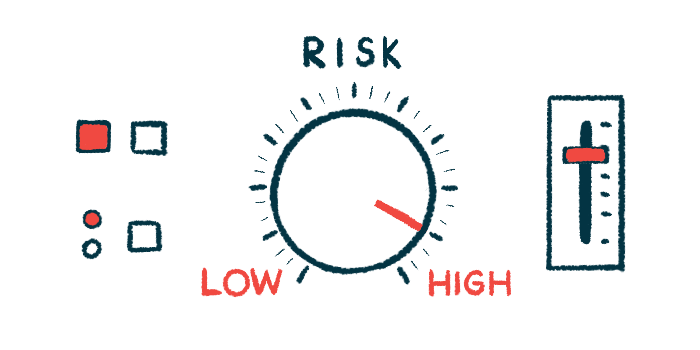Kidney failure risk factors ID’d in children with AAV kidney disease
Glomerulonephritis is rare in children, but linked with high rate of death
Written by |

While it’s rare in children, ANCA-associated vasculitis (AAV)-related glomerulonephritis, that is, an inflammation of the glomeruli, the kidneys’ filtering units, is associated with high rates of kidney failure or death, a study shows.
Also, scar tissue accumulating in the glomeruli, other kidney tissue abnormalities, and high protein levels in the urine at the initial presentation were associated with higher risk of worse outcomes in these pediatric patients. The study, “Clinicopathological characteristics of pediatric ANCA-associated glomerulonephritis,” was published in Pediatric Nephrology.
AAV is a group of autoimmune diseases marked by inflammation and damage to small blood vessels due to anti-neutrophil cytoplasmic antibodies (ANCAs), self-reactive antibodies that bind to and overactivate immune cells called neutrophils, which then mistakenly attack cells that line blood vessels.
In children, the disease most often affects the kidneys, lungs, and ear, nose, and throat. And “kidney involvement contributes significantly to morbidity with large numbers of patients progressing to kidney failure (KF) by adulthood,” wrote the researchers, who noted, however, that, due to the rarity of AAV in children, “there are few studies examining the [clinical characteristics and disease mechanisms] of [ANCA-associated glomerulonephritis] and their ability to predict long-term outcomes.”
Risk factors for kidney failure in AAV
Researchers at the Johns Hopkins School of Medicine retrospectively analyzed the clinical characteristics of 17 children diagnosed with ANCA-associated glomerulonephritis at the hospital between 2002 and 2022. The children were diagnosed at a median age of 15 and were mainly girls (59%), and white (58.8%). Of the AAV types, 10 children had microscopic polyangiitis (MPA) and seven had granulomatosis with polyangiitis (GPA).
When they were first seen, the children had a decreased mean estimated glomerular rate (eGFR) and an increased urine protein to creatinine ratio (UPCR). Both are indicative of impaired kidney function.
MPA patients tended to have lower eGFR and higher UPCR than those with GPA, although the differences didn’t reach statistical significance. Other signs of kidney problems were also more common in the MPA group, including high amounts of protein in the urine (proteinuria; 70% vs. 43%) and blood in their urine (60% vs. 43%). These differences also failed to reach statistical significance.
There were no significant group differences in other disease symptoms, which most commonly included fever, joint pain and inflammation, and lung involvement. Gastrointestinal symptoms were not common.
There were no significant differences between the two patient groups in the microscopic parameters of kidney tissue from biopsies, except for scarred glomeruli, which were only detected in MPA patients. Also, a type of glomeruli lesion called crescents was seen mainly in the GPA group, but the difference between the groups wasn’t statistically significant.
AAV treatment regimens were separated into two periods, 2002-2010 and 2010 to the present. While corticosteroid use was a mainstay in both periods, the use of rituximab, which is sold as Rituxan, among others, and plasma exchange, a blood-cleaning procedure, increased in the recent period.
There was no significant association between the patients’ treatment and disease outcomes.
Seven patients (41.2%) — five with MPA and two with GPA — died or progressed to kidney failure. The single death reported was related to a massive brain bleeding.
Several factors were significantly associated with a higher risk of poor disease outcomes such as kidney failure or death, statistical analyses showed. These included interstitial fibrosis and tubular atrophy (IFTA), or scarring of the tissue surrounding kidney structures and kidney tubules lesions, that was linked to a threefold higher risk, and a higher proportion of scarred glomeruli, which was associated with a 15% increased risk.
The presence of either C3 or C1q, two components of a part of the immune system known to contribute to AAV-related damage, was also significantly linked to a three to nearly four times higher risk of worse outcomes.
Proteinuria tended to be associated with a twofold increased risk and high eGFR levels to a 4% lower risk of poor outcomes, but these links were only close to statistical significance.
“In conclusion, pediatric [ANCA-associated glomerulonephritis] is a rare disease associated with significant morbidity. We identified [glomeruli scarring] and IFTA on [kidney tissue analysis] and proteinuria on initial presentation as risk factors for [kidney failure or death],” wrote the researchers, who said more studies are needed to better identify predictors of disease outcomes to assess the efficacy of available treatments in children with this condition.






